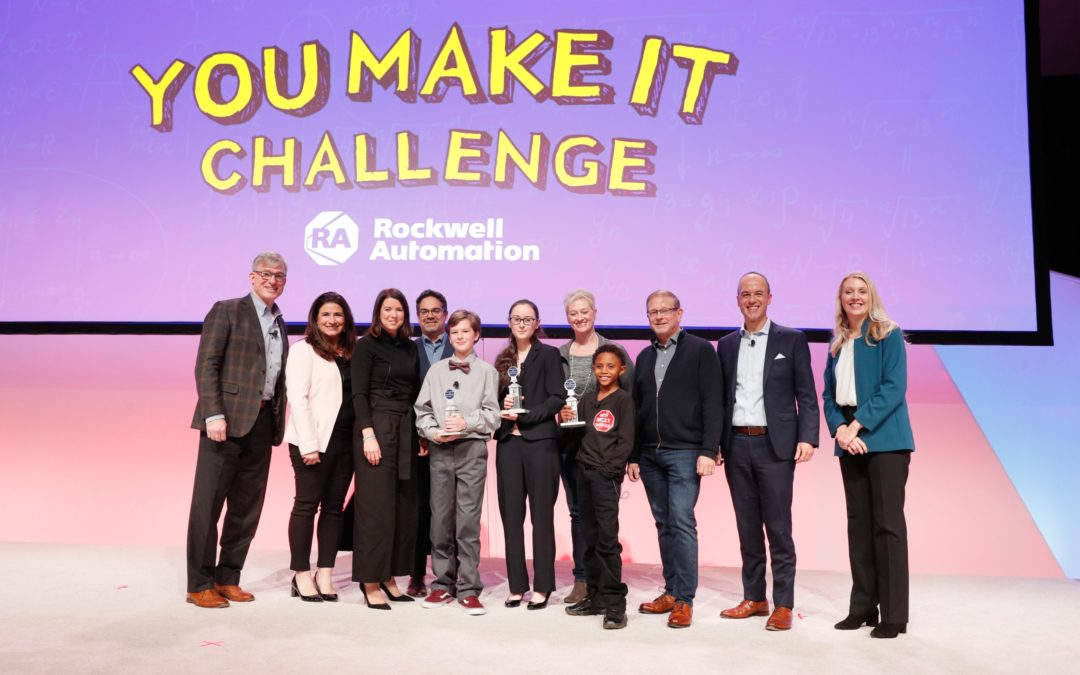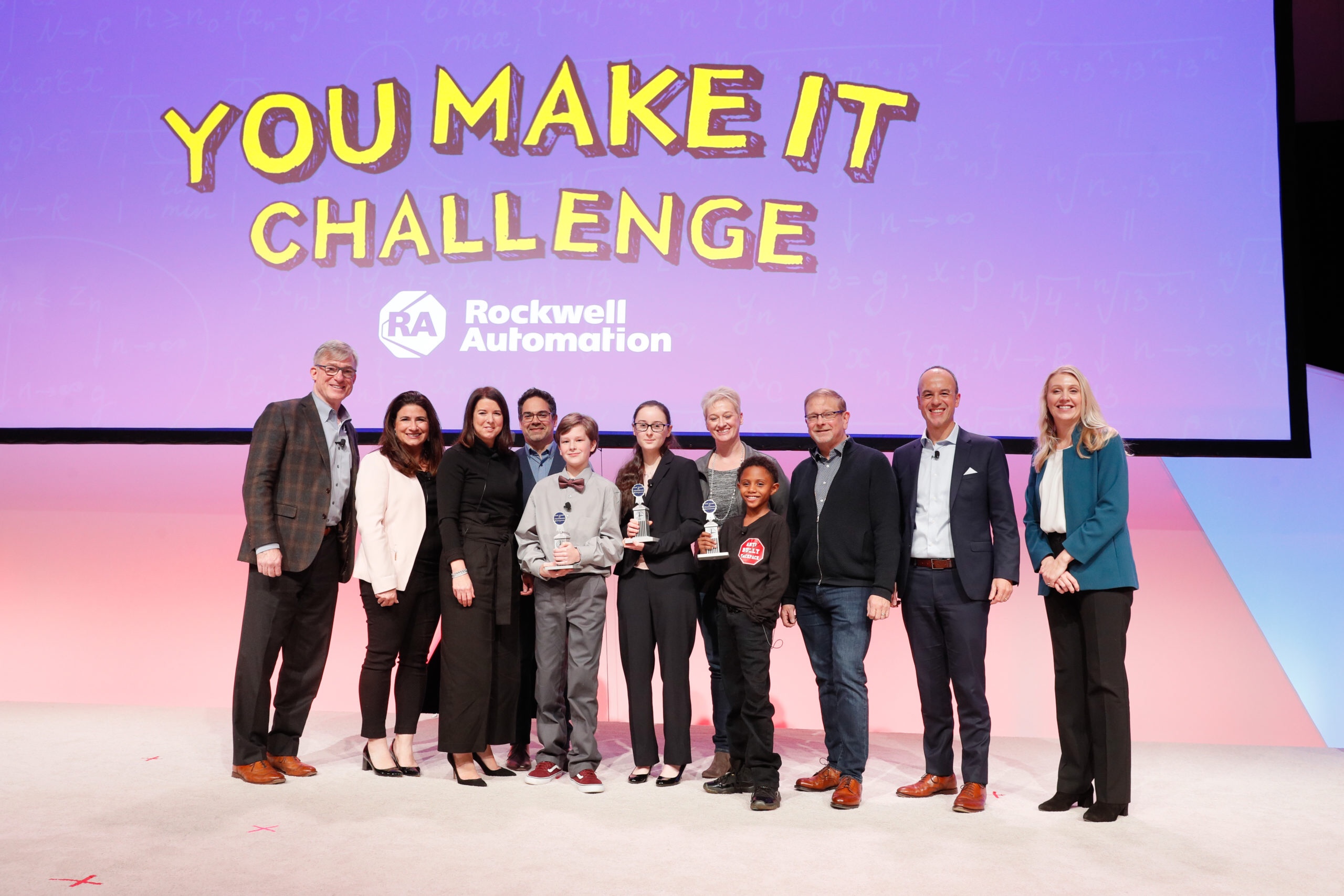
by Gary Mintchell | Nov 27, 2019 | Data Management, Manufacturing IT, Operations Management
This announcement hits many trends and things you will eventually grow tired of hearing—partnerships, collaboration among companies, ecosystems, Kubernetes, containers, and, yes, 5G. The latter is coming. We just don’t know when and how, yet.
Wind River, a leader in delivering software for the intelligent edge, announced that it is collaborating with Dell EMC as a key hardware partner for distributed edge solutions. A combined software and hardware platform would integrate Wind River Cloud Platform, a Kubernetes-based software offering for managing edge cloud infrastructure, with Dell EMC PowerEdge server hardware. The initial target use case will be virtual RAN (vRAN) infrastructure for 5G networks.
“As telecom infrastructure continues to evolve, service providers are facing daunting challenges around deploying and managing a physically distributed, cloud native vRAN infrastructure,” said Paul Miller, vice president of Telecommunications at Wind River. “By working with Dell EMC to pre-integrate our technologies into a reference distributed cloud solution, we can cost-effectively deliver carrier grade performance, massive scalability, and rapid service instantiation to service providers as their foundation for 5G networks.”
“In a 5G world, new services and applications will not be driven by massively scaled, centralized data centers but by intelligently distributed systems built at the network edge,” said Kevin Shatzkamer, vice president of Enterprise and Service Provider Strategy and Solutions at Dell EMC. “The combination of Dell EMC and Wind River technology creates a foundation for a complete, pre-integrated distributed cloud solution that delivers unrivaled reliability and performance, massive scalability, and significant cost savings compared to conventional RAN architectures. The solution will provide CSPs with what they need to migrate to 5G vRAN and better realize a cloud computing future.”
Wind River Cloud Platform combines a fully cloud-native, Kubernetes and container-based architecture with the ability to manage a truly physically and geographically separated infrastructure for vRAN and core data center sites. Cloud Platform delivers single pane of glass, zero-touch automated management of thousands of nodes.
Dell EMC hardware delivers potent compute power, high performance and high capacity memory is well suited to low-latency applications.
A commercial implementation of the open source project StarlingX, Cloud Platform scales from a single compute node at the network edge, up to thousands of nodes in the core to meet the needs of high value applications. With deterministic low latency required by edge applications and tools that make the distributed edge manageable, Cloud Platform provides a container-based infrastructure for edge implementations in scalable solutions ready for production.

by Gary Mintchell | Nov 26, 2019 | Commentary, Software
Rockwell Automation through Blake Moret, chairman and CEO, invested $1 billion in PTC with Moret gaining a seat on the board. The public reason was really to get early information about ThinkWorx, the IIoT product.
The investment valued PTC, a company with $1 billion in sales, at approximately $17 billion. On the surface, we all pondered why.
Speeding up the time, I was able to spend a couple of hours with several people from PTC at last week’s Automation Fair event. This really opened my eyes to the depth and breadth of the ThingWorx offering. There is much technology and usefulness under the hood. This is powerful software.
Now, I understand. Beyond a relationship and most likely some preferential access to ThingWorx and other PTC technologies, I’m surmising that Rockwell Automation can also drop some visualization projects, cut development costs, and utilize the full value of the PTC software. That alone would be a good return on the investment.
Therefore, the most prominent branding at Automation Fair–Powered by PTC.
Revealing more of Rockwell’s piece-at-a-time partnering strategy, it is not using PTC’s CAD and PLM offerings for its digital twin development, but instead it is partnering with ANSYS.
Like I noted in my initial report on Automation Fair, partnering was the centerpiece of news from the event. Looks like it is also the centerpiece of product development. That is most likely financially prudent.

by Gary Mintchell | Nov 25, 2019 | Internet of Things
Management!
OK, the headline came from IHS Markit | Technology, an Informa Tech market analyst company. The answer from me.
One of the value adds of analyst firms is to provide market research studies. Where once I received industrial market information from just one analyst firm, now several send me updates. Helps round out information. But these are always estimates, and prone to some error. It’s a good guide though.
This research looks at Industrial Internet of Things (IIoT) nodes. It also does the analyst thing of providing some guidance on implementation. The research is interesting. The guidance requires another post on management practices, I think. However, what I’m hearing is that some executive reads about IIoT and picks an unlucky person to head up the project. A pilot project is authorized, mostly completed, and mostly forgotten.
Notes from the Report
The global IIoT business is arriving at a tipping point, with the industry reaching a connectivity milestone next year that will pave the way for market-changing events like the proliferation of cloud-based technologies. These developments will help propel annual IIOT node shipments to 224 million units in 2023, a 100 million unit increase from 124 million in 2018.
However, despite the industry’s progress, about half of all IIoT deployments are failing. All too often, these deployments are being hamstrung by planning breakdowns, including the failure to set reasonable objectives and to gather support and cooperation from critical personnel within organizations. Without addressing these issues, the global IIoT market could face major challenges in reaching its growth potential.
The connection inflection
Industrial assets have traditionally employed fieldbus for connecting to the industrial network, and while Ethernet solutions have been in place for a couple of decades, their adoption has been slow. However, after years of making progress in the market, Ethernet is set to displace Fieldbus as the primary network medium for the first time in 2020. Ethernet will account for 43 percent of IIOT node shipments next year, compared to 41 percent for Fieldbus.
“There are now more than 1 billion connected devices on factory floors around the world,” said Alex West, senior principal analyst, industrial technology, at IHS Markit | Technology. “This massive installed base is about to reach a tipping point, with Ethernet overtaking Fieldbus in 2020. The proliferation of Ethernet is enabling the transmission of larger volumes of data. This will ultimately bring in technologies like the cloud that are going to supercharge the IIOT business.”
Connecting to reduce downtime
The arrival of a faster connectivity solution will allow manufacturers to utilize cloud-based solutions to reduce downtime.
“One of the really significant challenges faced by industrial companies is unplanned downtime,” West said. “Just to quantity that challenge, it’s estimated in the automotive industry that $20,000 to $30,000 per minute is lost through unplanned downtime. New applications enabled through IIoT, maintenance and asset-health monitoring, are really helping overcome these challenges. We’ve estimated around a 30 percent average saving or reduction in unplanned downtime can be achieved through industrial IoT solutions.”
Monitoring assets
The benefits of IIoT solutions facilitated by enabled devices can be realized across the entire lifecycle of production, from product design, to monitoring inventory levels in the supply chain.
For example, Harley Davidson, a few years ago was facing business challenges in terms of fulfilling customer requirements. By improving the connectivity of its plant, the company was able to reduce the time to meet new orders filled from 21 days down to six hours.
Addressing IIoT deployment fails
While faster connectivity holds great promise for expanding the IIoT market, the reality is that current deployments are failing as often as they succeed.
“At the proof-of-concept phase, about half of IIoT projects are failing—which is acceptable for companies attempting to be agile and trial new applications,” West said. “However, there is a similar failure rate when companies move to the deployment stage. This means companies are investing enormous sums in these projects but aren’t getting the payback they expected.”
The failure of a project is defined as not meeting the customer’s expected payback. Many times, the high failure rate can be attributed to inflated expectations. A total of 50 percent of companies expect to see payback within one year, although many of these projects can take much longer to generate returns.
IHS Markit | Technology recommends manufacturers take the following steps to increase their chances of IIoT success:
- Specify the project by determining in advance which exact challenges you want IIoT to address.
- Start small, with some pilot projects of concepts to see how the technology can be utilized.
- Go right to the top, with senior-level management support for projects.
- Get the urge to converge, by ensuring support from all relevant functional groups.
- Leverage your people power, by getting staff involved with deploying the technology and encouraging them to view IIoT not as a threat, but as an augmentation to their job capabilities.

by Gary Mintchell | Nov 22, 2019 | Data Management, Security, Software
The IoT group that I’ve been working with for the past few years has been absorbed into the OEM group which is carrying on an expanded function. This blog post from Steve Todd, Dell Technologies Fellow, details the development of data confidence work that has been contributed to the open source Linux Foundation to seed Project Alvarium.
Following is a quick summary. Go to the blog for additional information about trusted data work.
A team of Dell Technologies specialists finished building the first-ever Data Confidence Fabric (DCF for short). The prototype code will be contributed to the Linux Foundation to seed Project Alvarium.
For several years, the CTO of the Dell Technologies Edge and IoT business unit has been touting a vision of data monetization. However, it’s hard to monetize untrusted Edge and IoT data. As he likes to say, “It’s midnight. Do you know where your data has been?”
Enterprise storage systems have delivered trusted data to applications for a long time. We started our initial investigation wondering if these same trust principles could be applied to Edge and IoT ecosystems. Recent developments in data valuation, distributed ledgers, and data marketplaces facilitated everything coming together.
Five Levels of Trust
We started with the EdgeX Foundry chair of the Core Working Group, Trevor Conn. Trevor wrote the first-ever Data Confidence Fabric software using Go Lang, the same programming language EdgeX is written in. His Data Confidence Fabric software registered with EdgeX as a client and began processing simulated device data. The initial confidence score for this data was “0” (no trust was inserted).
Dell Technologies then hired three computer science interns from Texas A&M to deploy EdgeX and the Data Confidence Fabric software on a Dell Gateway 3000 with a Trusted Platform Module (TPM) chip.
EdgeX was then adjusted to support N-S-E-W authentication by using VMware’s open-source Lightwave technology.
Dell Boomi software was invoked by the Data Confidence Fabric software to gather provenance and appended this metadata to the sensor reading.
The Data Confidence Fabric software then stored the data locally using IPFS (an immutable, open-source storage system). This fourth level of trust insertion gives an application confidence that the data/provenance has not been tampered with. It also has the additional benefit of enabling analytics to access data closer to the source.
The Data Confidence Fabric software then registered the data into VMware’s blockchain (based on the open-sourceProject Concord consensus algorithm).

by Gary Mintchell | Nov 21, 2019 | Leadership, News, Organizations
We sat through two-and-a-half hours of presentations preparing us (writers, thinkers, journalists) for the coming two days of technical meetings. Speakers included the CEO, various vice presidents, and, oh, yes, three teenaged inventors.
Do not throw up your hands and mutter about “kids these days.” That’s a disservice. I am at an event sponsored by the technology supplier Rockwell Automation called Automation Fair. By the way, the company’s 28th annual gathering and my 22nd visit. The numbers of younger people, women, and “minorities” attending increases every year, and this year kept the trend up and to the left.

But back to the kids. The company sent out a challenge through various social media to students inviting them to invent something that would solve a social problem. The top three were given an all-expense trip (with parents) to Chicago to attend Automation Fair.
These three gave the best presentations of the day–content, presentation skills, poise, command of the audience. Yes, they had mentors, but that’s the key. Instead of complaining about kids, give them a useful challenge and then mentor them.
One project solved a problem with sump pumps not keeping up with ground water resulting in flooded basements. Areas of the US had large amounts of rain this spring and early summer flooding many basements. Many of the audience probably wanted to sign up to buy one.
Bullying remains a serious problem in schools (and other places where kids congregate). One young inventor came up with an anti-bullying backpack. It included a battery pack, two wifi-enabled web cameras, and communication. In a bully situation, the owner could quick-call an authority (parent, administrator, whatever) and show live video of the bullies. It also records to the cloud.
Sanitation kills more people throughout the world than just about anything else–lack of sanitation, that is. In many places, people just defecate in the street or wherever. Simple toilets requiring little to no water to operate widely available would save millions of live. The third young inventor actually invented such a device.
Make a difference. Find a way to mentor someone. Make it a discipline.

One last thing, Maria Kassarjian, executive director of Edesia, spoke on the efforts of her company, by the way using automation technologies from Rockwell, to create nutritional food packs to be sent to areas where malnutrition is a huge problem. The products contain peanuts, a nutritionally dense food, for both nourishment and also to introduce infants to nuts in order to reduce the prevalence of nut allergies.










